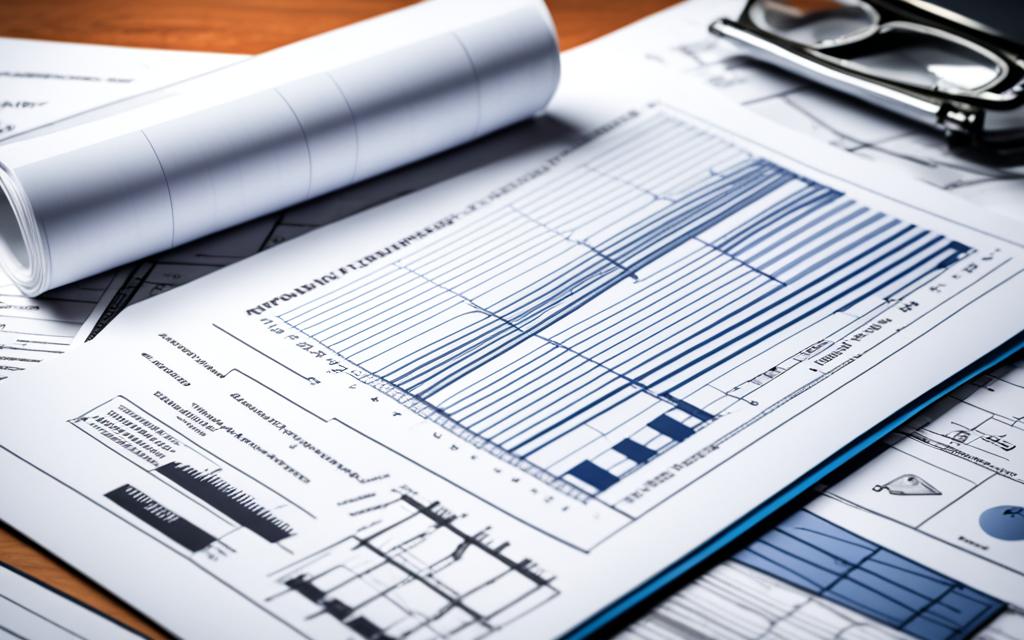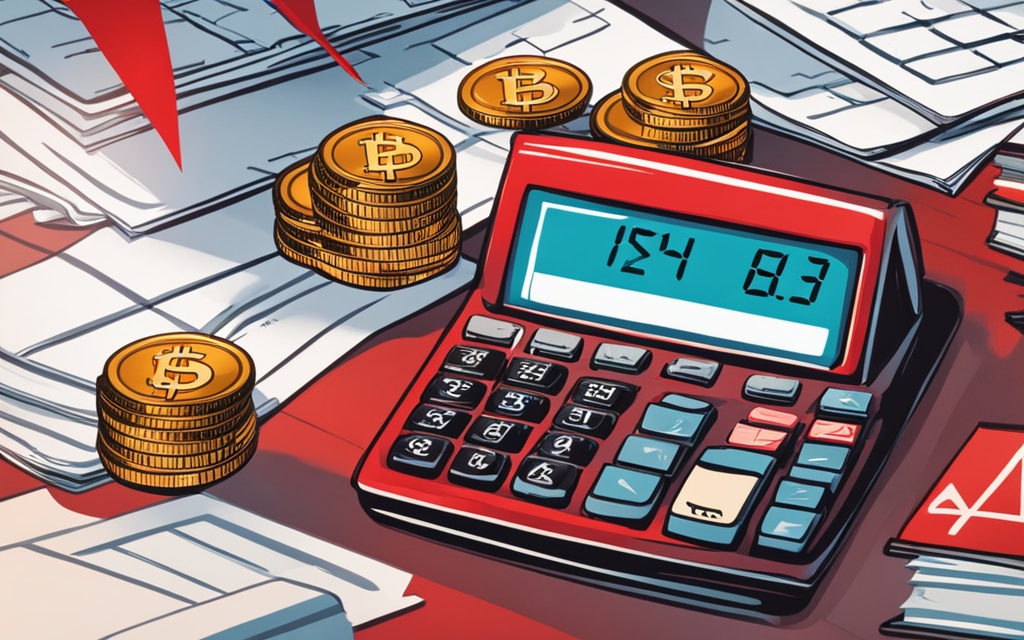Provisional vs Non Provisional Patent: Key Differences
Did you know over 80% of patent applications in the U.S. are non-provisional? This shows how important it is to know the difference between these two patent types. For inventors, understanding these differences is key to protecting your ideas effectively.
Provisional patents offer flexibility and are less costly. They let inventors lock in a filing date for up to 12 months while they work on their ideas1. On the other hand, non-provisional patents are more formal and complex. They lead to a full patent that protects your invention for 20 years after approval2. Using both types of patents wisely can help you get the best protection for your work.
Let’s look at why choosing the right patent type is crucial for innovators.
Key Takeaways
- The provisional patent application lasts for 12 months and is less expensive to file.
- Non-provisional patents provide enforceable rights and last for 20 years.
- Filing a provisional patent allows time for invention development before a non-provisional filing is required.
- Consultation with a patent attorney is advised for non-provisional applications due to complexity.
- Understanding filing procedures can enhance your overall patent strategy.
Understanding the Basics of Patent Applications
Patents are a big deal in the world of inventions. They give me a legal right to my invention. This means I can stop others from making, using, or selling it without my okay. It’s a way to encourage people to invent more by giving them credit and rewards.
There are different kinds of patents, each with its own purpose. This helps me choose the right one for my invention.
What is a Patent?
A patent is a title given by the government. It protects my invention for a set time, depending on the patent type. Getting a patent means I get a filing date that helps protect my rights to the invention.
This is vital because who files first can own the invention. Each patent application must meet certain rules to be approved. It also needs to clearly explain what the invention is.
Types of Patents
Knowing about the different patents is crucial. Most patents are utility patents. They protect new and useful things like processes, machines, or materials. The USPTO gets over 600,000 patent applications every year, mostly for utility patents3.
For some inventions, I might look into design patents or plant patents. But utility patents usually protect the most. Filing a provisional patent lets me check if my invention will do well in the market. This helps me decide if I should go for a full patent application4.
Provisional Patent Application Explained
A provisional patent application acts as a temporary step in the patent process. It lets inventors claim a “patent pending” status while they work on their inventions. This application doesn’t directly lead to a patent but keeps the inventor’s rights safe.
Definition and Purpose of Provisional Patents
Provisional patents are for inventors who want time to improve or market their ideas before a full application. By filing early, I can secure my patent rights for a year. If I file a full application within that year, it can use the early date, protecting me from infringement risks5.
Benefits of Filing a Provisional Patent
Choosing a provisional patent has big perks. It’s cheaper, with a fee of about $125, compared to $530 for a full patent6. It also cuts down on costs, saving around $1,905 for simple inventions5. Plus, I can file several provisional applications in a year, giving me time to perfect my idea before committing fully.
This approach not only saves money but also helps me negotiate with investors by showing I’m serious about my inventions. It gives me the time I need to develop my ideas without rushing into a full application56.
Non-Provisional Patent Application Overview
Getting a patent is a big step, and the non-provisional patent application is key. It’s important for protecting your invention and securing your rights. You need to give a detailed description of your invention, along with drawings and diagrams. This helps the patent office check if your invention is new and useful7.
Under U.S. law, a utility patent lasts for twenty years from when you file your application. This means it’s a long-term commitment to your idea8.
Characteristics of Non-Provisional Applications
Non-provisional patent applications go through a detailed check by the patent office. This ensures only inventions that meet certain standards get protected7. To get these rights, you need to provide a lot of technical information in your application.
This careful preparation is crucial for keeping your patent rights strong. It stops others from making or selling your invention without permission7. These applications usually cost more than provisional ones. Many inventors use provisional ones to save money at first9.
Advantages of Non-Provisional Patents
Applying for a non-provisional patent gives you exclusive rights to your invention. This is important for protecting your work. It sets up a legal barrier to stop others from using your ideas7.
Also, the detailed application makes non-provisional patents important legal and technical guides. They explain how your invention works and what it’s for7. Even with the costs and challenges, getting a non-provisional patent is crucial for innovation9.

Provisional vs Non Provisional Patent: Key Differences
Understanding the differences between provisional and non-provisional patents is key. Filing a provisional patent is simpler and cheaper than a non-provisional one. It acts as a placeholder for a year, giving you time to prepare before applying for a non-provisional patent10. The cost to file a provisional patent is lower, and lawyers charge less because there are fewer steps10. This lets you get a priority date while you work on your invention. But, the USPTO doesn’t check provisional patents, so you have a year to apply for a non-provisional one10.
Filing Procedures for Each
Filing a provisional or non-provisional patent has its own steps. Provisional patents don’t need complete claims or a formal check, making the start easier. You can focus on the main parts of your invention without the strict rules of a non-provisional patent11. After filing, you can say your invention is “patent pending,” drawing interest and investors. Non-provisional applications, however, need more details and a long review process that can be expensive.
Examination Process Differences
The exam process shows big differences between the patents. Non-provisional patents need a detailed description, drawings, and specific claims11. This thorough check means more work and higher costs. Getting a non-provisional patent can take years, making the wait from start to patent long11. Choosing between a provisional and non-provisional patent depends on your situation and how you want to protect your invention.
Establishing Patent Priority Dates
In the world of patents, knowing about filing dates is key. The patent priority date sets the start of your innovation’s legal protection. It’s vital because it decides what counts as prior art during the review. Getting an early filing date with a provisional application can give you an edge, especially in patent law.
Importance of Filing Dates
Filing dates are crucial for patent rights. When I send in a provisional patent application, the date it’s received is key. It starts the clock for me to work on my invention. I get to improve it while keeping the priority claim, which is crucial for turning it into a non-provisional patent within a year12.
This priority date is also important for protecting my ideas. If I do it right, I can keep my original rights and apply for more patents13.
Claiming Priority with Provisional Patents
To claim priority, I need to meet certain conditions, like having the same inventors and sticking to deadlines. If I quickly turn my provisional into a non-provisional patent, I keep the original filing date. This is good for my patent’s length14.
But, I must be careful not to shorten my patent’s life12. Remember, a provisional patent doesn’t give me patent rights. It’s just a temporary step before I file a non-provisional patent to secure those rights12.
Knowing how provisional and non-provisional patents work helps me in filing for patents. It lets me protect my inventions well141213.
Financial Implications of Patent Filing
Understanding the costs of patent filing is key. The prices for provisional and non-provisional patents can greatly affect my budget. I often notice a big difference between the two.
Cost Comparison Between Provisional and Non-Provisional Applications
Filing a provisional patent is cheaper upfront, costing between $70 to $280. Non-provisional applications, however, can get much more expensive. This is due to factors like attorney fees and office actions during the review process15.
For instance, the cost to file a provisional patent is lower. It’s $75 for “micro-entities” and $150 for “small entities” as of June 202116. This makes it a smart choice, allowing me to delay the higher costs of non-provisional applications.
Financial Benefits of Provisional Applications
Choosing a provisional patent saves money upfront. It also gives me a filing date and “patent pending” status for a year. This time is crucial for improving my invention without the high costs of a non-provisional application15.
Provisional applications don’t get checked for uniqueness by the USPTO. But, they do secure that important filing date which can help later with a non-provisional filing16. If I don’t turn my provisional into a non-provisional within 12 months, I could lose my rights to the invention17. So, filing a provisional patent helps with my budget and protects my intellectual property in a competitive market.

Market Testing and Development Opportunities
Filing a provisional patent gives me a chance to test the market and look for development chances for my invention. This early filing gets me the “patent pending” status. It lets me work on my product with feedback from real users.
How Provisional Patents Facilitate Market Research
A big plus of provisional patent benefits is doing market research for a year. I can see if people like my invention and get feedback. This helps me make changes before applying for a non-provisional patent. Plus, filing a provisional patent is cheaper, costing between $70 to $280, which saves money while I explore my options15.
Refining Inventions Before Non-Provisional Filing
With a provisional patent, I can improve my invention. This makes my non-provisional application better, with clear descriptions and claims based on market feedback. But, I must file for a non-provisional patent within a year to keep my priority date18.
Using the provisional patent period well sets a strong base for my innovation. It matches my product with market needs and protects my idea with early filing18 and15.
The Patent Filing Process Timeline
The patent filing process can be complex, especially when looking at the timelines for provisional and non-provisional patents. Understanding the provisional patent status timeline helps me plan better and avoid delays.
Duration of Provisional Patent Status
A provisional patent gives inventors 12 months to work on their invention, find funding, or check market interest before applying for a non-provisional patent2. This time is crucial but cannot be extended19. It’s vital to use this period wisely to see if my invention will work in the market.
Timelines for Non-Provisional Patent Approval
Non-provisional applications take longer due to their detailed nature. They require thorough documentation, drawings that meet USPTO standards, and a declaration of originality. You must start this process within 12 months of the first provisional filing, or 10 months if the invention was funded by the government19. Waiting for approval can take months or even years, depending on the invention’s complexity and the patent office’s workload.
Knowing the details of the patent timeline is crucial for managing the patent filing process. This knowledge helps me plan the move from a provisional to a non-provisional patent effectively.
Fixing redirect errors can improve my website’s performance, making the patent filing smoother2.
Conclusion
Knowing the difference between provisional and non-provisional patents is key for anyone in the patent world. Provisional patents are a good choice for early-stage innovators with tight budgets. They have lower filing fees than non-provisional patents2021. This first step secures a priority date and lets me test the market for a year22.
But, I must file a non-provisional application within a year to keep my priority claim. Non-provisional applications can be more expensive and complex. They often need help from intellectual property experts to meet USPTO rules2021. Knowing this can help shape my patent strategies and protect my inventors rights.
In conclusion, choosing between a provisional or non-provisional patent is a big decision. It affects how well I can protect my innovations. By understanding each type’s benefits and needs, I can make a strategy that keeps my creations safe and puts me ahead in a fast-changing market2022.
FAQ
What is the difference between a provisional and a non-provisional patent?
A provisional patent is a temporary application that gives me an early filing date. It also gives me “patent pending” status for my invention. On the other hand, a non-provisional patent is a full application that leads to a real patent. It fully protects my invention.
Why should I file a provisional patent application?
Filing a provisional patent secures my patent rights early. It also lets me refine my invention with market feedback before spending more on a non-provisional application.
How long does a provisional patent last?
A provisional patent lasts one year. If I don’t file a non-provisional application by then, it expires. I’ll lose my early filing date.
What are the costs associated with filing a patent?
Provisional patents are cheaper upfront than non-provisional ones. Non-provisional applications can cost a lot due to attorney fees for the detailed review process.
Can I make changes to my invention after filing a provisional patent?
Yes! With a provisional patent, I can tweak and improve my invention based on market feedback before filing a non-provisional application.
How do I establish a patent priority date?
Filing a provisional patent early gets me a priority date. This is key in a first-to-file system. It gives me a big advantage in protecting my invention.
What information do I need to include in a non-provisional patent application?
A non-provisional application needs a detailed invention description, claims that outline the protection scope, and drawings to show how it works.
What are the key benefits of a non-provisional patent?
A non-provisional patent gives me exclusive rights to make, use, and sell my invention. It’s a key step in fully protecting my intellectual property.
Why is understanding the patent filing process important?
Knowing the differences between provisional and non-provisional patents helps me make a strong patent plan. It guides my choices on timing, costs, and legal protection for my inventions.
How can I improve my patent strategy?
Using provisional patents for their lower costs and development time helps me strategically place myself in the patent world. This way, I can better protect my innovations.







